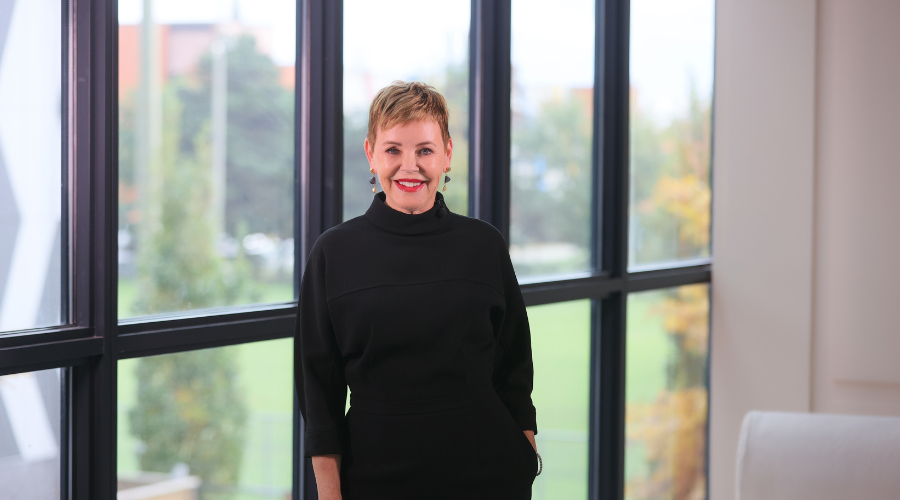I bought into the downsizing craze and the emotional and financial costs were enormous.
Before I retired, I decided that my lovely home in Oakville Ontario was too big and too expensive to maintain. I was a single mother. My daughter was attending university. It was the age of downsizing and I was constantly reading advice in the business press about how prudent it would be to sell my house before prices dipped. Did I really need a three-story, three-bedroom house?
Money had always been tight. My ex only paid child support for two years after we separated. The rest was up to me. Since I was a full-time college teacher, I made a decent living. My daughter and I lived a solid middle-class, some might say a privileged life. If I wanted to maintain this life style into retirement, I reckoned that selling my house and downsizing to a condo was the solution.
In the business press, I was reading column after column about the joys of condo living and how suitable it was for empty nesters. If I sold my 2,800 square-foot home, I’d be positioning myself for a comfortable retirement where paying the bills wouldn’t be top of mind.
I couldn’t have been more mistaken. The odyssey of purchasing a downtown Toronto condo in 2006 from builder’s plans, making a sizeable down payment and watching the hole in the ground where the condo was to be built, sit dormant for four years before the developer started construction was nerve-wrecking. Moving was worse.
Picking up stakes from the familiarity of my Oakville neighbourhood and from a home I adored was heart wrenching. The real estate agent I chose to represent the sale of the home informed me, in no uncertain terms, that buyers wanted turnkey solutions. Dutifully I set about renovating. In came granite counters, tile backsplashes and resurfaced kitchen cupboards. Out went the old laminate floors to be replaced by more fashionable hardwood boards. For months I lived in utter chaos.
When the great recession of 2008 hit, my investment portfolio dipped by 32 per cent. Increasingly, my assets were wrapped up in my house and selling during a major recession could prove to be dicey. My contract with the builder locked me into the purchase of this condo, a home of which I was becoming increasingly skeptical.
Yet when I did close the sale on my Oakville home, prices had already risen well above their 2008 levels. My original home was doing more than holding its value, while condo values in Toronto were beginning to stagnate.
Money was pouring out of my savings account. First for renovations and moving expenses, next for new apartment-sized furniture for the condo and finally for real estate fees and taxes. Municipal and provincial land transfer taxes in Toronto were about $10,000 upon closing for a unit of this price.
By 2011, when it came time to separating what I intended to keep from what I might give away to what I needed to throw away, I became despondent and frazzled. Our family history was stored in this house. Books and paintings and furniture that I’d carefully collected for more than 30 years needed to go.
The new condo was 895 square feet. It looked enticing in the stunningly decorated presentation suite when I first purchased it. Not so in my unit when I finally had a chance to inspect it from the ground up.
By the time my condo was move-in ready, a rental apartment across the way blocked my view of Lake Ontario. By the time I sold my unit 27 months after moving in, another condo of 18 stories, towering not more than 200 yards from my terrace, blocked my view of the city of Toronto.
I lived in the condo for two and a half years. None of those years were particularly happy ones. I must admit to missing my garden, to being able to carry the groceries from my car straight into the house. I missed having a spare room for guests. I missed having a decent-sized kitchen to prepare meals for friends and family. Entertaining became a nightmare with me lugging food up to the top-floor party room that needed to be booked weeks (sometimes months) in advance with a $500 damage deposit held by the condo’s management.
When I finally sold my condo in February 2014, I realized an initial profit of about $100,000. A healthy percentage of the profit was eaten up by moving, real estate, banking and legal fees. When I purchased my new townhome in Oakville, I was back in debt. Home prices had increased and my condo hadn’t kept up. As of May 2014, I held a $200,000 mortgage on my $600,000 townhouse. Before I’d purchased the condo I owed $50,000 in a homeowner’s line of credit and I was mortgage free.
Luckily, mortgage rates were at all-time historical lows when I financed my new home. The monthly payment of less than a $1000 per month is not much higher than my condo fees plus a large storage locker I was renting. The best thing is I’m paying myself and investing in my future by owning a little piece more of my spacious townhome every month.
Whenever I have some extra cash, through part time work or tax refunds, I immediately pay down the mortgage. My intention is to owe $100,000 in five years with equity of about $600,000 in my home accounting for three per cent yearly real estate price increases in my lakefront neighbourhood.
A timely CNBC article on retirement, http://cnb.cx/1JrInyF, takes a new look at mortgages making a case for why you shouldn’t rush to pay off your mortgage before retiring.
Downsizing isn’t for everyone. Many of us approaching or living in retirement have worked hard to be able to enjoy comfortable surroundings in our senior years. Somewhere along the line, I’d been convinced that downsizing was the only choice. The downsizing craze clouded my judgment and made it downright impossible for me to explore the best solutions for living in retirement. Now I’m back on track.






























